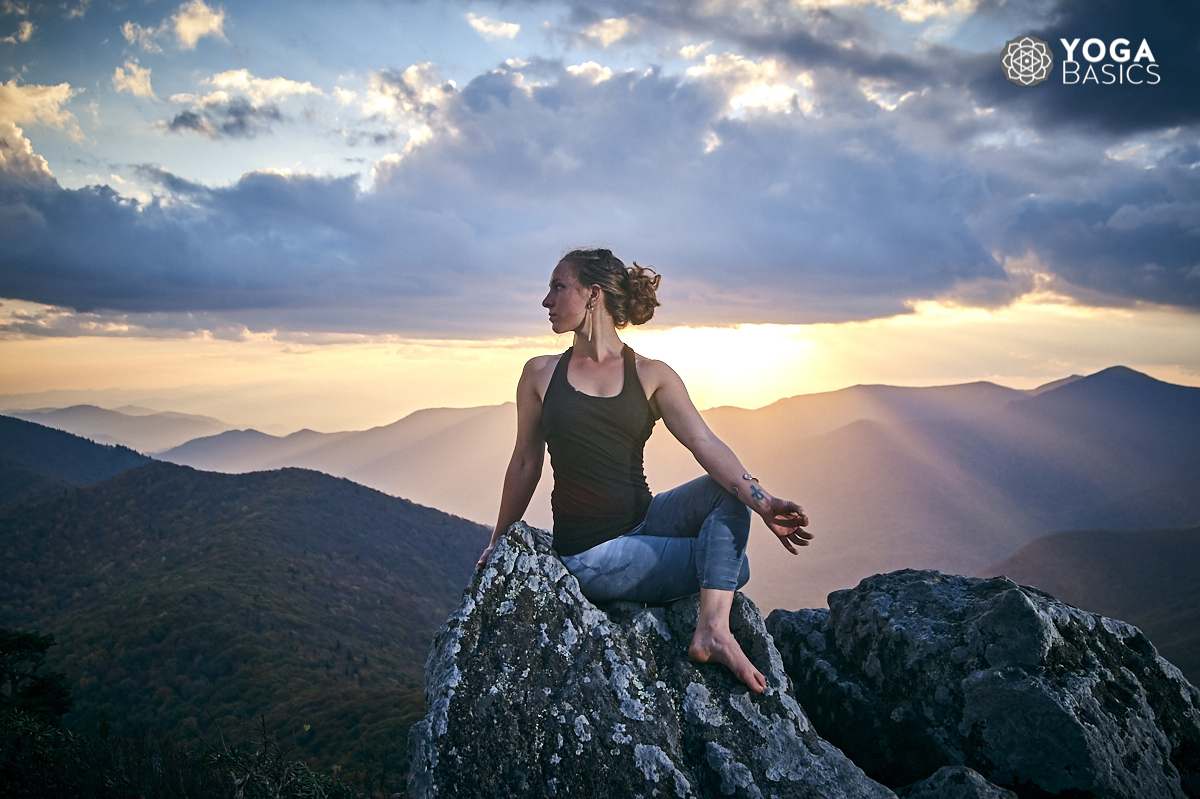Judgments are habitual knee-jerk reactions to people, places, and events. Often judgmental thoughts are based on our samskaras–the story of ourselves and previous life experiences–and repeating these judgments reinforces and deepens these unconscious patterns. If our judgments are negative, we dramatize, worry and stress; if they are positive, we fantasize about the future. Either way, judgmental thoughts take us out of the present moment and create harm and suffering to ourselves and others. While our minds will always create judgments, there are simple ways to learn how to reduce and correct these harmful thought patterns on our yoga mats and meditation cushions.
Why Practice Non-Judgment?
By practicing non-judgment, or simply observing aspects of life without attaching an opinion, we step back from these reactions and see situations for what they are. This pulls us out of the past or hypothetical future and into the present moment, allowing us to appreciate everything that is. By creating less judgmental thoughts we create less harm and are able to see the world around us with more clarity.
Benefits of practicing non-judgment
• Promotes awareness and mindfulness
• Cultivates more gratitude
• Reduces stress and worry
• Helps make wiser decisions
• Boosts productivity
• Fosters a peaceful mind
• Increases authentic self-knowledge
• Deepens expressions of love toward yourself and others
How to Stop Judging in Yoga and Meditation
In order to practice non-judgment, begin simply by recognizing judgmental thoughts or attitudes when they occur. Try labeling your judgments–positive, negative or neutral–for the next day (or even for the next hour or the next 15 minutes; you’ll be surprised by how often they surface!).
Attempt to release the emotions or opinions that you form based on these judgments. That is, practice equanimity toward each thought or situation. This isn’t the same as becoming numb or insensitive toward life, or as turning into an emotionless robot (our brains evaluate and judge for a reason!); it’s simply a practice in finding and maintaining a Sattvic state of mind.
Non-judgment in Meditation
Meditation and concentration practices are perfect settings to work with judgment, since we are already focusing on the present moment. Before your meditation, set an intention to not judge yourself for the thoughts, feelings and other distractions that will inevitably surface. Throughout your practice, instead of getting upset with the fact that you’re planning dinner, moving a tingly foot or thinking when you’re not supposed to be thinking, accept each sensation as part of the meditation process and remember that there is no such thing as a bad meditation.
Although we commonly dwell on negative judgments more than others, the same goes for positive or neutral situations. For example, if you see colors or feel waves of bliss during meditation, instead of getting excited, recognize that “good meditation” is a judgment too. Then come back to your breath.
Non-judgment in Asana
We often don’t realize how frequently we judge ourselves during a yoga practice. Next time you feel like you’re “good” or “bad” at a yoga pose, realize that these qualities are not inherent in asana. Maintaining a steady tree pose is not better than falling out of a tree pose, just as a tree in nature is no better or worse if it’s blowing in the wind; they’re simply different states of being. Similarly, stop judging yourself against others! Since our bodies are completely unique, each of us has different needs and abilities in a physical practice.
By not judging ourselves, we see that asana practice is simply about breathing through each pose and noticing how our bodies, minds, and states of being flow from practice to practice or throughout a practice. Without the veil of judgment, we create clarity to practice self-observation and self-reflection in each new moment.
Cultivating Compassion
To embrace a non-judgmental attitude, it is helpful to practice compassion towards yourself and aspects of life that you judge. The Buddhist technique of meditating on Metta, or loving-kindness, can assist in finding a non-judgmental love toward the good, the neutral and yes, the bad too.
Like all practices, not letting judgment consume our lives takes time and effort. However, the more we practice not judging in yoga, the more we’ll be able to practice in other aspects of lives. Likewise, the more we practice not judging ourselves, the more likely we are to not judge others. When we are able to appreciate everything as it is, we form a clear and balanced environment for our minds and hearts, and a larger sense of belonging in that which surrounds us. By recognizing judgmental thoughts and not to attaching to judgments, we foster acceptance and harmony in our lives, both on and off the yoga mat.
How much of what passes through your mind comes along with a strong opinion of right or wrong, or good or bad? How could detaching from judgments affect your life and the lives of others?


















Leave a Reply